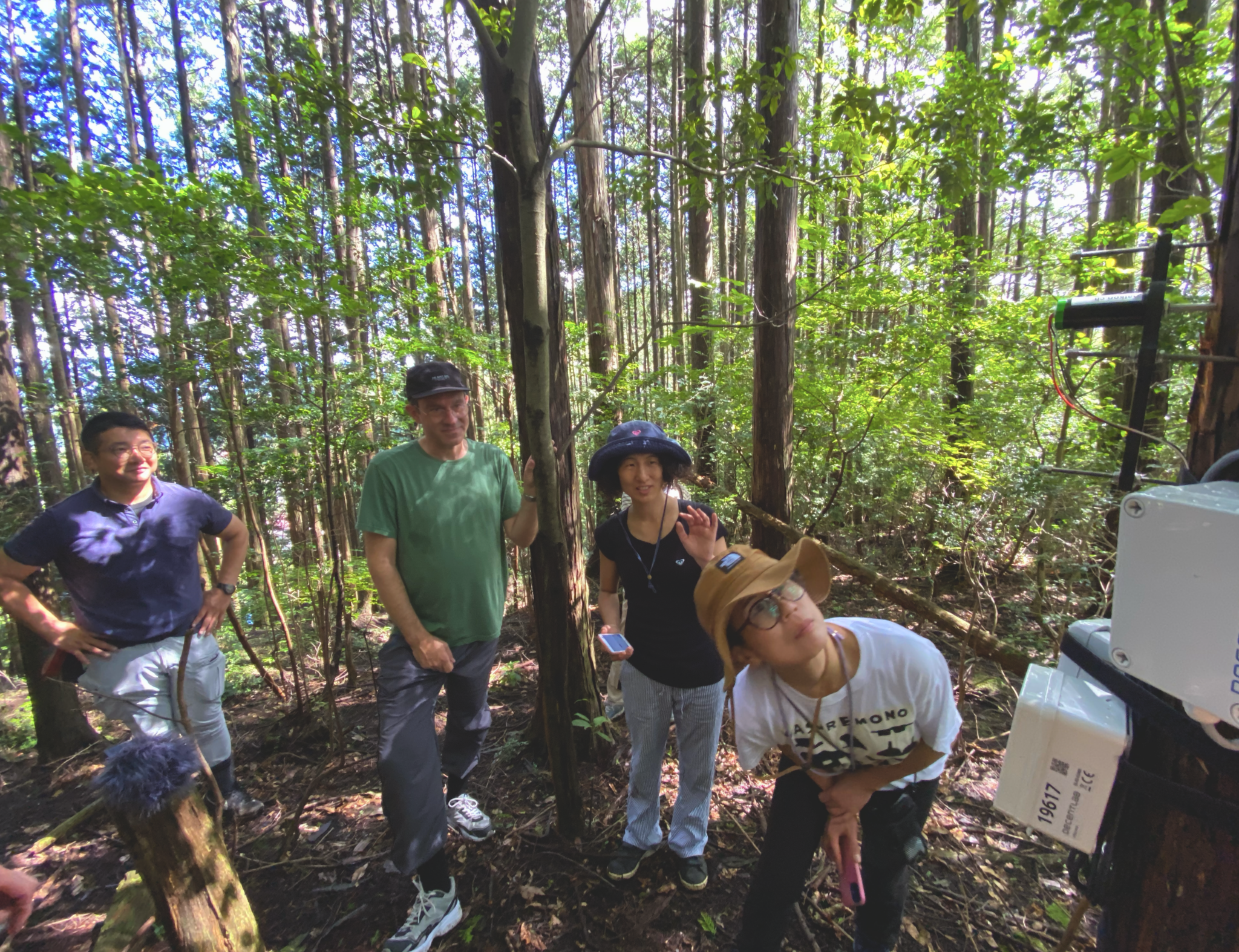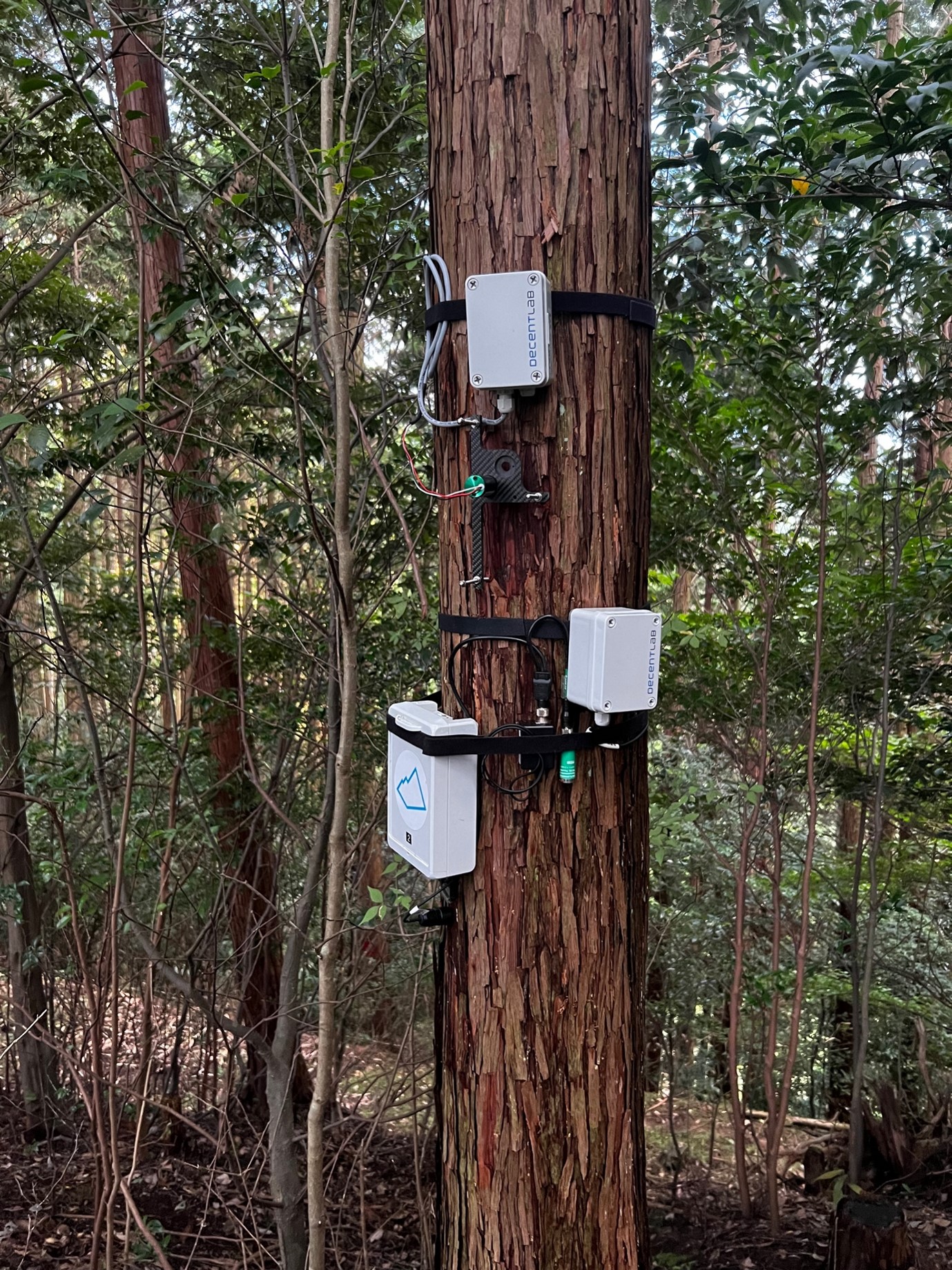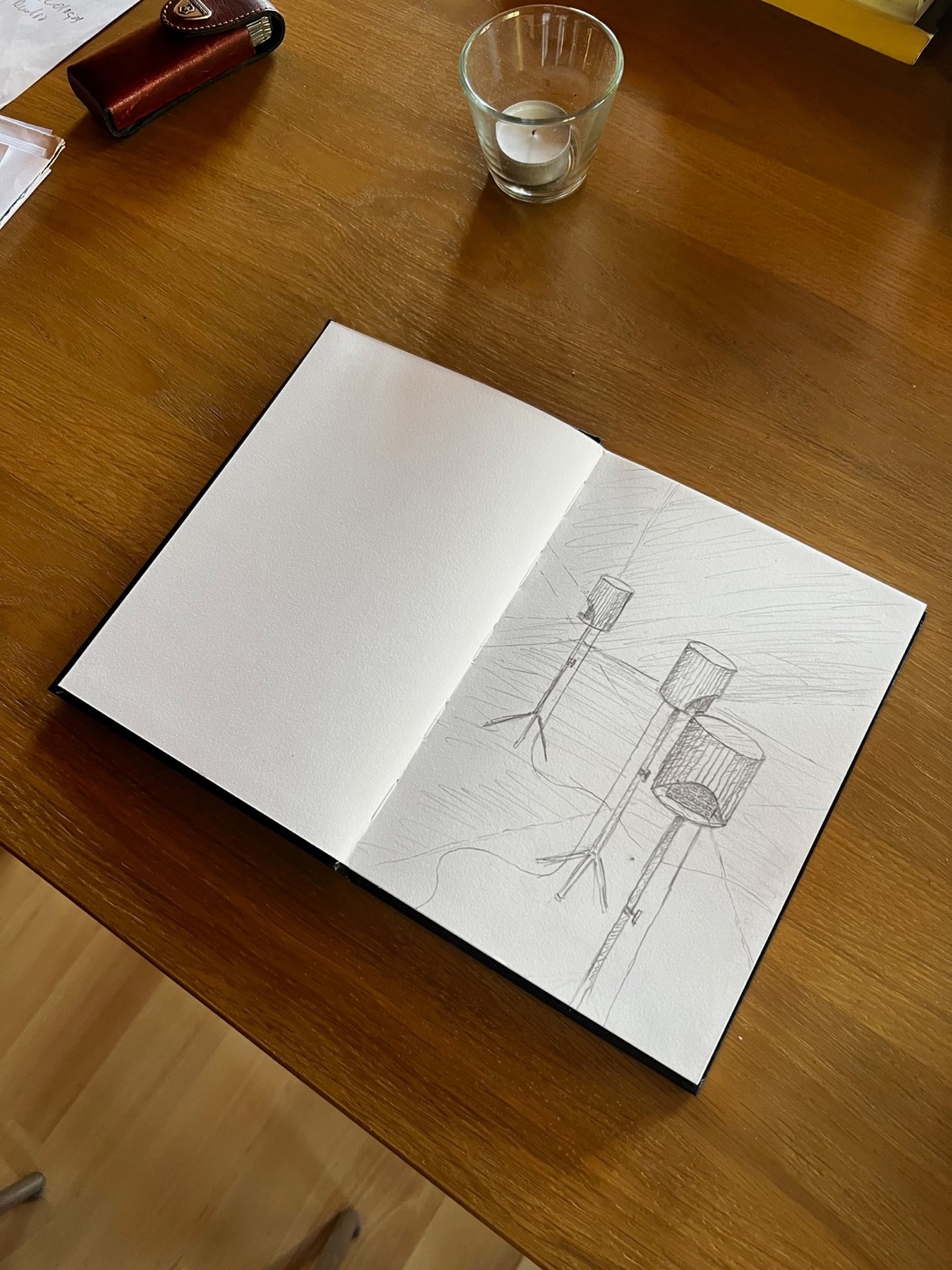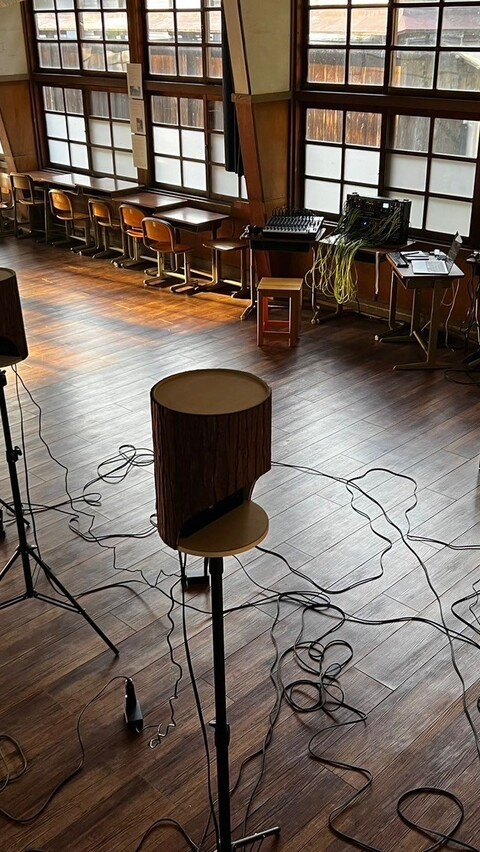
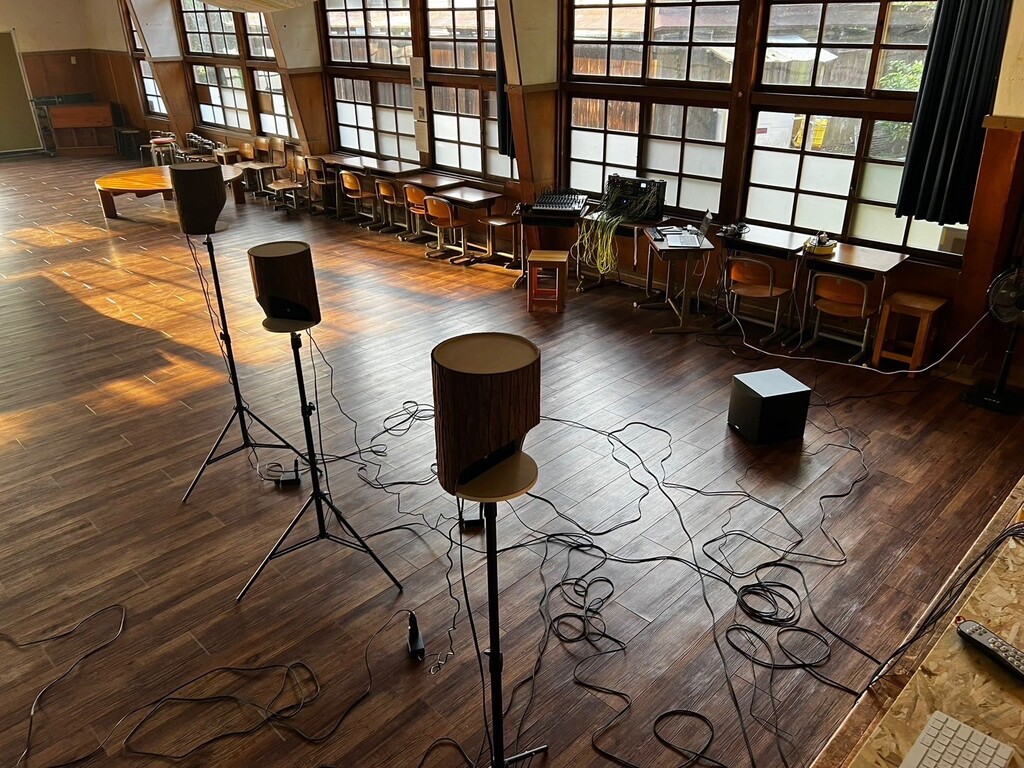
Giving a voice to ecosystems Marcus Maeder @ YOSHINO 20 ART FESTIVAL
Sustainability meets Art, Innovation and Tradition : Marcus Maeder’s “Forest Voices” at Kinpusenji Temple
Giving a voice to ecosystems: Artist and researcher Marcus Maeder’s engagement with the Nara forest has given birth to a new artwork in century-old Kinpusenji, part of YOSHINO 20 ART FESTIVAL in celebration of the registration of the Temple to the UNESCO World Heritage, in co-production with Swiss Vitality Days and the 160th anniversary of bilateral relations Switzerland – Japan.
In 2023, Marcus Maeder (PhD ETH Zurich) installed sensors on trees in the forest of Nara to measure the health of the local ecosystem. “Forest Voices” blends these data with recordings of the forest community, to shed light on climate change in an informed, accessible and immersive way.
This event highlights the urgent conversation needed around biodiversity, in the unique context of the majestic Shugendo Temple. On October 12, during the opening ceremony of YOSHINO 20 ART FESTIVAL, Marcus Maeder was greeted by the Chief Priest of Kinpusenji and by the artistic director of YOSHINO 20 and Vitality Ambassador Seichi Saito, who also presents an artwork, “Jiku”.
Additionally, Marcus’ installation “Growth Model” is on display in Yoshino, allowing visitors to hear trees grow, transforming the silent resilience of the Swiss forest into a captivating sonic-artist experience.
Venue: Mount Yoshino, Yoshino, Nara Prefecture
More information: here
Organizers: Yoshino Town, Yoshino Visitors Bureau, Yoshino-Omine World Heritage 20th Anniversary Commemorative Project Council
Supported by Embassy of Switzerland in Japan / Vitality.Swiss in cooperation with the Science & Technology Office Tokyo
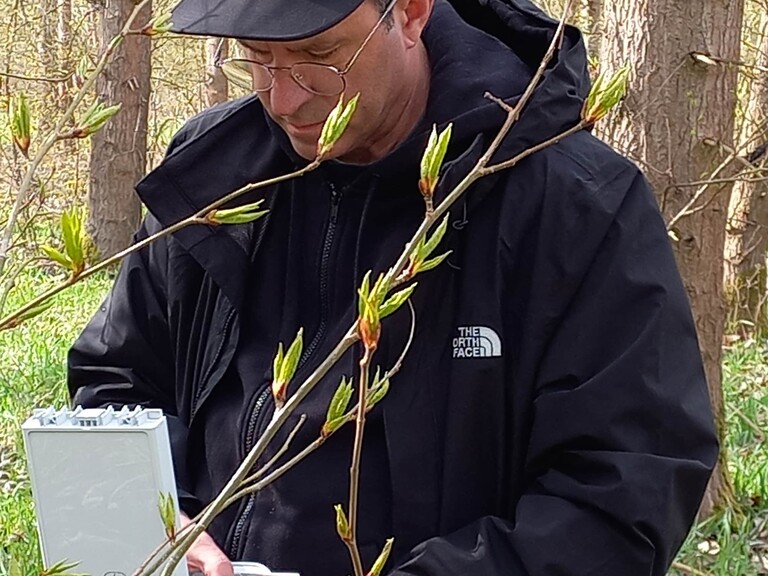
Forest Voices
Venue: Kinpusen-ji Temple
The new artwork “Forest Voices” is currently in progress.
Please take a moment to read the artist’s production notes, and stay tuned for the full unveiling on the release day!
"I would like the forest community to have its say in a holistic way - the inhabitants, foresters - the people living and working in the forest should be given a voice like the trees and become part of this sound installation. The installation consists of three ultrasonic loudspeakers that reproduce such an expanded forest soundscape and project it onto the walls of the exhibition space. Biodiversity and microclimate data are sonified and reproduced as flute tones. Microclimate data from three measuring stations in the Shimoichi forest control the pitch and timbre of shakuhachi sounds that were played and recorded during a Robuki meditation. This is accompanied by excerpts from conversations I had with Shimoichi villagers about their relationships with the forest and nature."
Growth Model
Venue: Kinpusen-ji Temple
"The TreeNet research and monitoring network has been collecting data on the health of the Swiss forest since 2011. The data from 8 trees' growth in 2018 was transformed into a sonic-artistic experience in the “Growth Model” installation, where measurement data controls sound generation. What can be heard in the “Growth model” installation is growth data from trees (ash trees) in Switzerland - you can hear how and when the trees grow using sinusoidal sounds. The sonified measurement data shows that trees mainly grow at night/early in the morning when the turgor pressure in the cells is high enough."
Growth Model
Sound installation, Marcus Maeder 2022
The TreeNet research and monitoring network (1) has been continuously collecting data on the health of the Swiss forest since 2011. Over 420 trees at 61 locations are monitored in the automated sensor network. The aim of TreeNet is to generate data sets with high temporal resolution on tree growth and the water dynamics of trees for research purposes and to provide a broad public with near real-time indicators of the growth performance of forests and how they deal with drought stress. The network is operated in partnership by the Swiss Federal Institute for Forest, Snow and Landscape Research WSL, ETH Zurich, the Institute of Applied Plant Biology and the University of Basel and is funded by the Federal Office for the Environment FOEN.
In recently published studies (2) (3), the dynamics of tree growth in TreeNet were observed in detail for the first time and astonishing things were discovered: trees grow mainly at night when they fill their vessels and cells with water from the soil and the turgor pressure in the cells is sufficiently high. Each tree species grows at a different rate and in different time windows during the year - the increasing drought caused by climate change also has an impact on the growth of trees in Switzerland.
In the “Growth Model” installation, the data from the 2018 growth period (March-October) of 8 selected trees are sonified, i.e. transformed into a sonic-artistic form of experience. In the process of sonification, measurement data series are used to control the sound generation on a computer.
The ash (Fraxinus excelsior) is an important tree species for the forestry and timber industry. It belongs to the noble deciduous trees and its wood is used wherever strength and elasticity are required, for example in tool handles or sports equipment. It is not only climate change, with ever longer and more intense periods of drought and heat, that is causing it problems, but in recent years also ash dieback, which is caused by an introduced fungus. In addition, the tree species is being attacked by the Asian ash borer beetle and it is to be feared that ash trees in Europe will be severely decimated in the coming decades.
The Growth Model installation consists of ash wood tubes (so-called LignoTubes, a new wood processing and shaping technology), into each of which a loudspeaker chassis is embedded. The hollow body of the tubes is stimulated to vibrate by the loudspeakers - the objects thus become electro-acoustic instruments on which the growth data of ash trees at three locations in treenet (Lägern ZH, Schänis SG and Visp VS) are played back as sounds. The date and time of the measurement data played in the installation is projected in the exhibition space in order to link the sonifications/growth spurts to the time of day and season.
1. Zweifel R, Etzold S, Basler D, Bischoff R, Braun S, Buchmann N, Conedera M, Fonti P, Gessler A, Haeni M, Hoch G, Kahmen A, Köchli R, Maeder M, Nievergelt D, Peter M, Peters RL, Schaub M, Trotsiuk V, Walthert L, Wilhelm M and Eugster W (2021) TreeNet–The Biological Drought and Growth Indicator Network. Front. For. Glob. Change 4:776905. doi: 10.3389/ffgc.2021.776905
2. Zweifel R, Sterck F, Braun S, Buchmann N, Eugster W, Gessler A, Häni M, Peters RL, Walthert L, Wilhelm M, Ziemińska K. Why trees grow at night. New Phytologist. 2021 Jun 12.
3. Etzold, S., Sterck, F., Bose, A.K., Braun, S., Buchmann, N., Eugster, W., et al. (2021) Number of growth days and not length of the growth period determines radial stem growth of temperate trees. Ecology Letters, 00, 1– 13. Available from: https://doi.org/10.1111/ele.13933
Artistic concept and realization: Marcus Maeder
Measurements and data processing: Roman Zweifel
Programming: Ken Gubler
Links: https://treenet.info , http://www.marcusmaeder.ch , http://www.natkon.ch
Please see here for details about the 2023 Vitality.Swiss project.
Sponsored by

This event is part of the Swiss Vitality Days 2024, celebrating the 160th anniversary of bilateral relations between Switzerland and Japan, and takes place in the framework of Vitality.Swiss, Switzerland’s public diplomacy program on the road to Expo 2025 Osaka – Kansai.
SPONSORSHIP SWISS VITALITY DAYS I

Marcus Maeder’s 2024 project in Japan is supported by ZHdK (Zurich University of the Arts)

